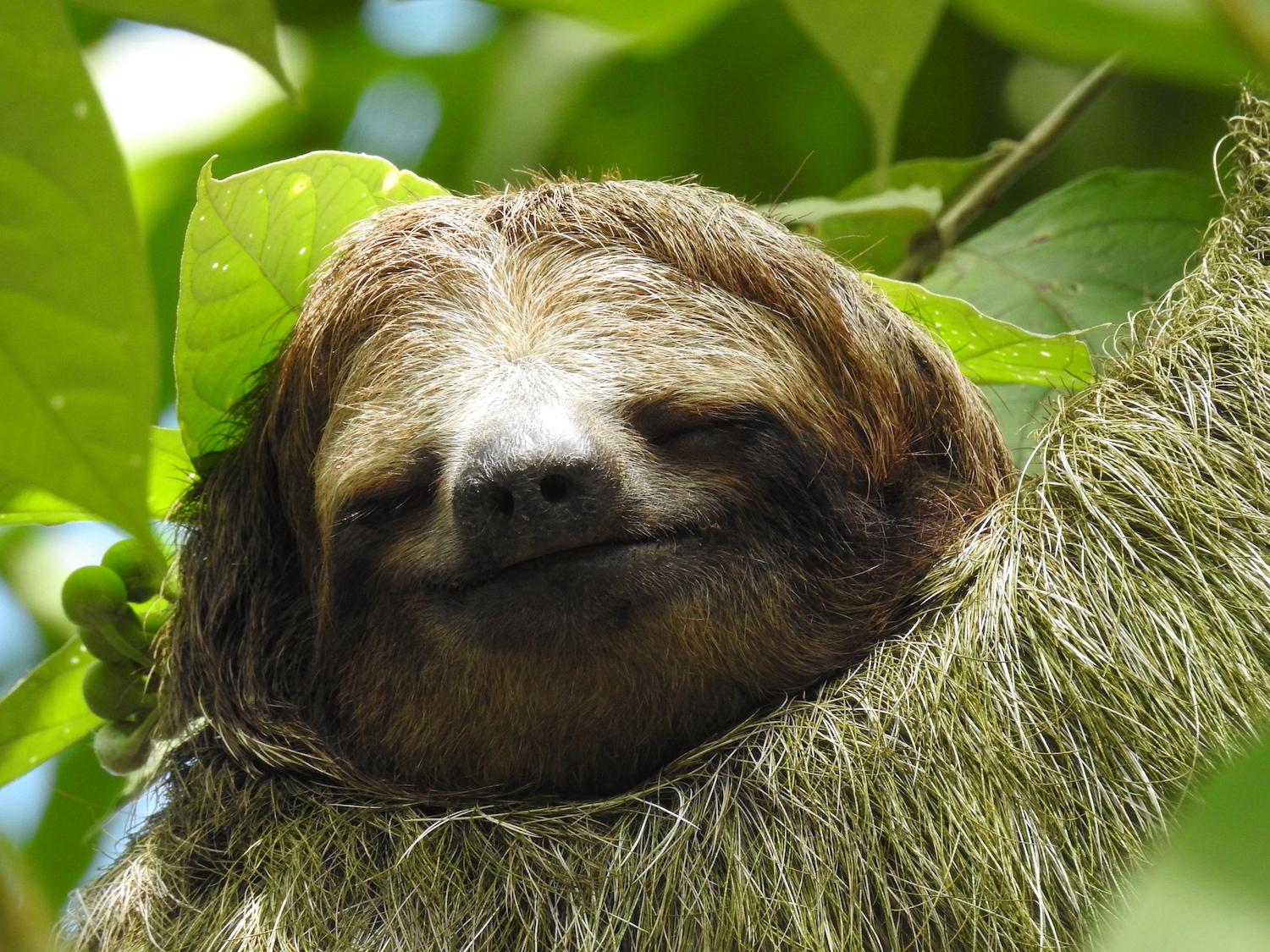
A brown-throated three-toed sloth at Pachira Lodge on the edge of Tortuguero National Park in Costa Rica/Jennifer Bain
The first thing to know about sloths is that they usually look like hairy brown blobs draped over branches so high in the tree canopy that you need binoculars to see them.
One sloth obligingly lifted its head a smidge so I could study its sleepy face and the way its mouth was frozen in a dreamy smile. That same one let me get a good look at its long, curved claws. Another obligingly perched so low in a tree that I stood two arms lengths away from it in the bush and breathed in the rank smell of its long, coarse hair.
But the other sloths I saw in Costa Rica — and I saw enough over eight days to get spoiled and lose count — were usually napping and acting, well, sloth-like.
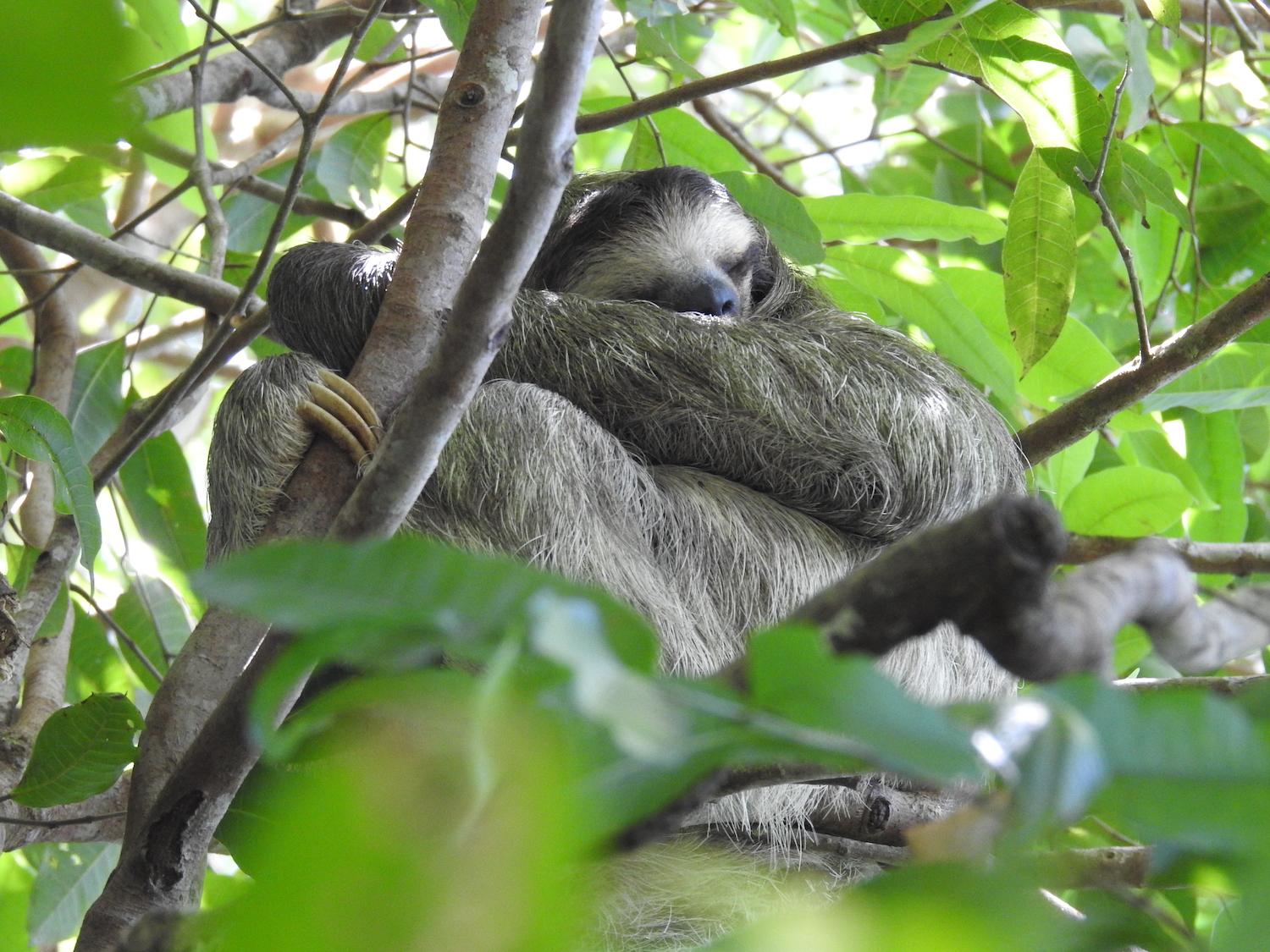
This sleepy brown-throated three-toed sloth is showing off its limbs and curved claws/Jennifer Bain
Costa Rica touts itself as one of the most biodiverse places on the planet and there are countless creatures to see beyond slow-moving but always charming sloths. This small Central American country, a land bridge between North and South America, accounts for just 0.03 per cent of the world’s surface but is also home to about five per cent of the world’s biodiversity.
To find out more about this green-minded country that likes to boast that it doesn’t have an army and is one of the oldest democracies in the world, I joined a small group with a tour operator called Exodus Travels. For eight days on the Natural Highlights of Costa Rica route, we criss-crossed the country by mini-van. The first stop, after nine of us from the U.K., U.S.A. and Canada met our guide Monica Leal in the capital city San Jose, was Tortuguero National Park.
Costa Rica has 20 national parks and two national refuges that are cared for by Sistema Nacional de Áreas de Conservación Costa Rica (SINAC). But there are more if you count other protected places and it gets confusing trying to figure out who owns the land and who’s in charge. What matters is that the country preserves more than 25 per cent of its land including rainforests, cloud forests, jungles, islands, Pacific and Caribbean beaches, volcanoes, hot springs, caves, river canyons and waterfalls.
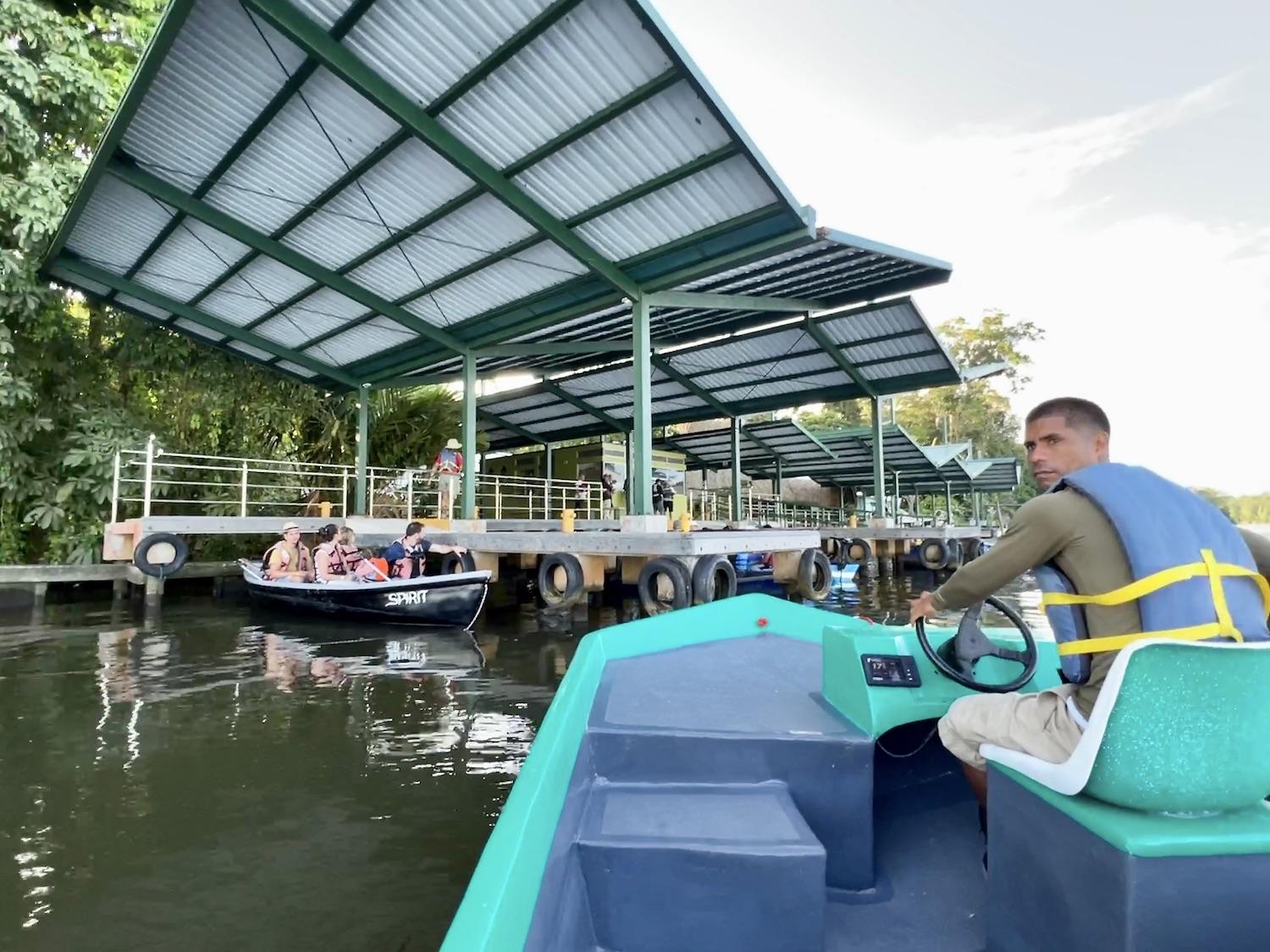
Boat driver/wildlife spotter Michael Bennet stops at the Tortuguero National Park ranger station to pay our fees and find out which canal we can visit/Jennifer Bain
Tortuguero may be remote and hard to get to, but it’s an iconic destination that’s famous for its nesting sea turtles.
It was mid-April and too early for the turtles when we got off the bus from the city and boarded long, narrow wooden boats in Caño Blanco and then traveled an hour up Río Tortuguero to Pachira Lodge on the edge of the park.
To officially explore the park the next morning, Exodus paid $15 entry fees on our behalf and we checked in an at the ranger station for our canal assignment. Kayakers and canoers are sent to certain canals, and motorized boats to other spots.
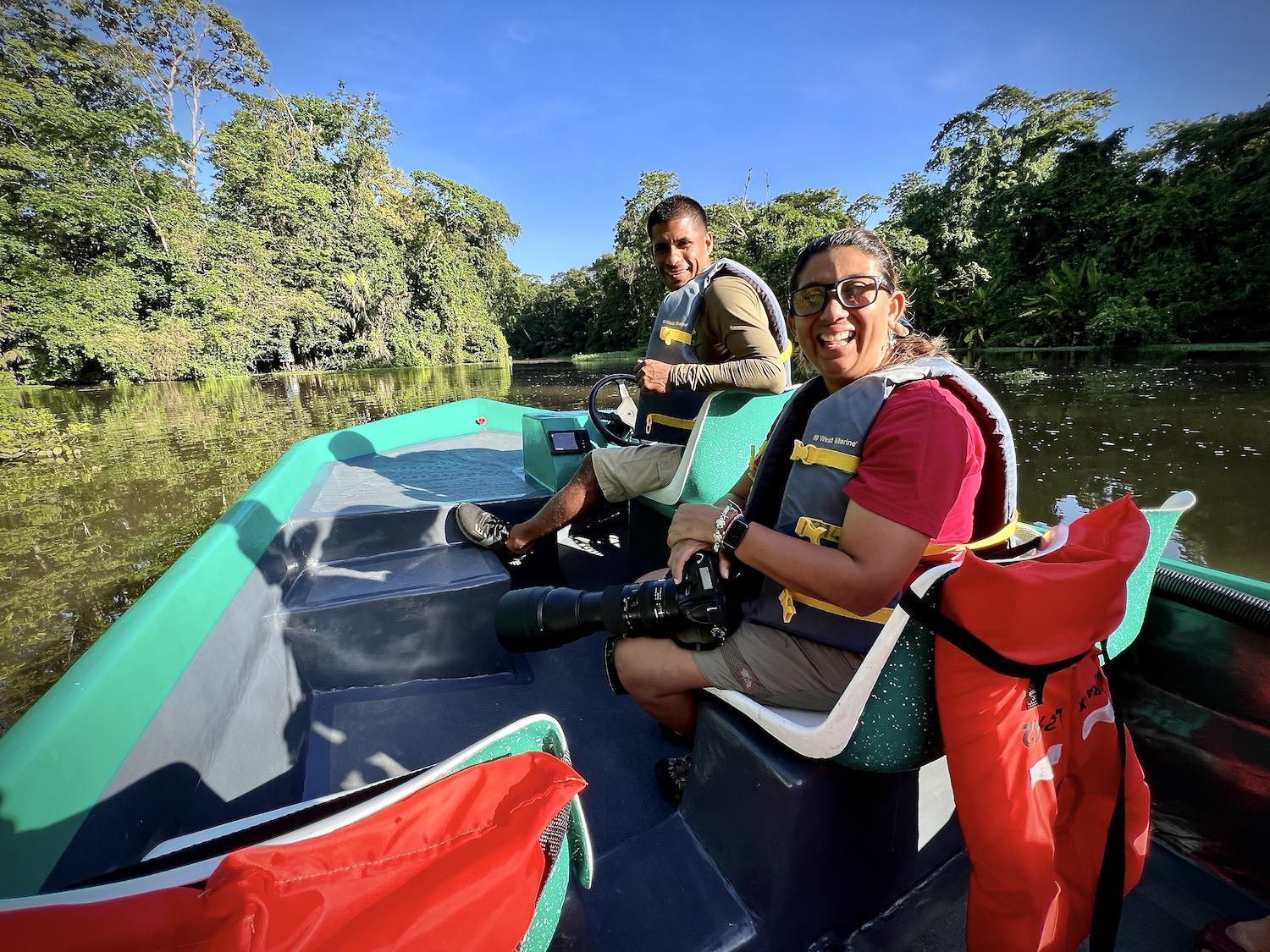
Exodus Travels guide Monica Leal and boat driver Michael Bennet in Tortugero National Park's canals/Jennifer Bain
We were assigned to Caño Harold, one of the canals that was created by a lumber company decades ago to transport wood. Once our boat driver Michael Bennet made his way there, he began spotting wildlife faster than we could keep up.
Great Kiskadees provided flashes of yellow against the green backdrop. Anhingas (aka snakebirds), with dark bodies and long, snake-like necks, stood regally with their wings spread and feathers fanned out to dry after diving for food. Northern Jacanas, vaguely chicken-like but sporting dramatic yellow patches between their eyes, waded merrily on floating vegetation. A skittish Keel-Billed Toucan briefly showed off its long, rainbow beak before disappearing.
“In the morning, the rainforest is kind of noisy,” mused Leal, who has been a licensed guide here for 28 years. “I always say it’s like nature waking up. You hear the parrots. You hear the howler monkeys. There is a moment when it’s so tranquil and you don’t hear anything.”
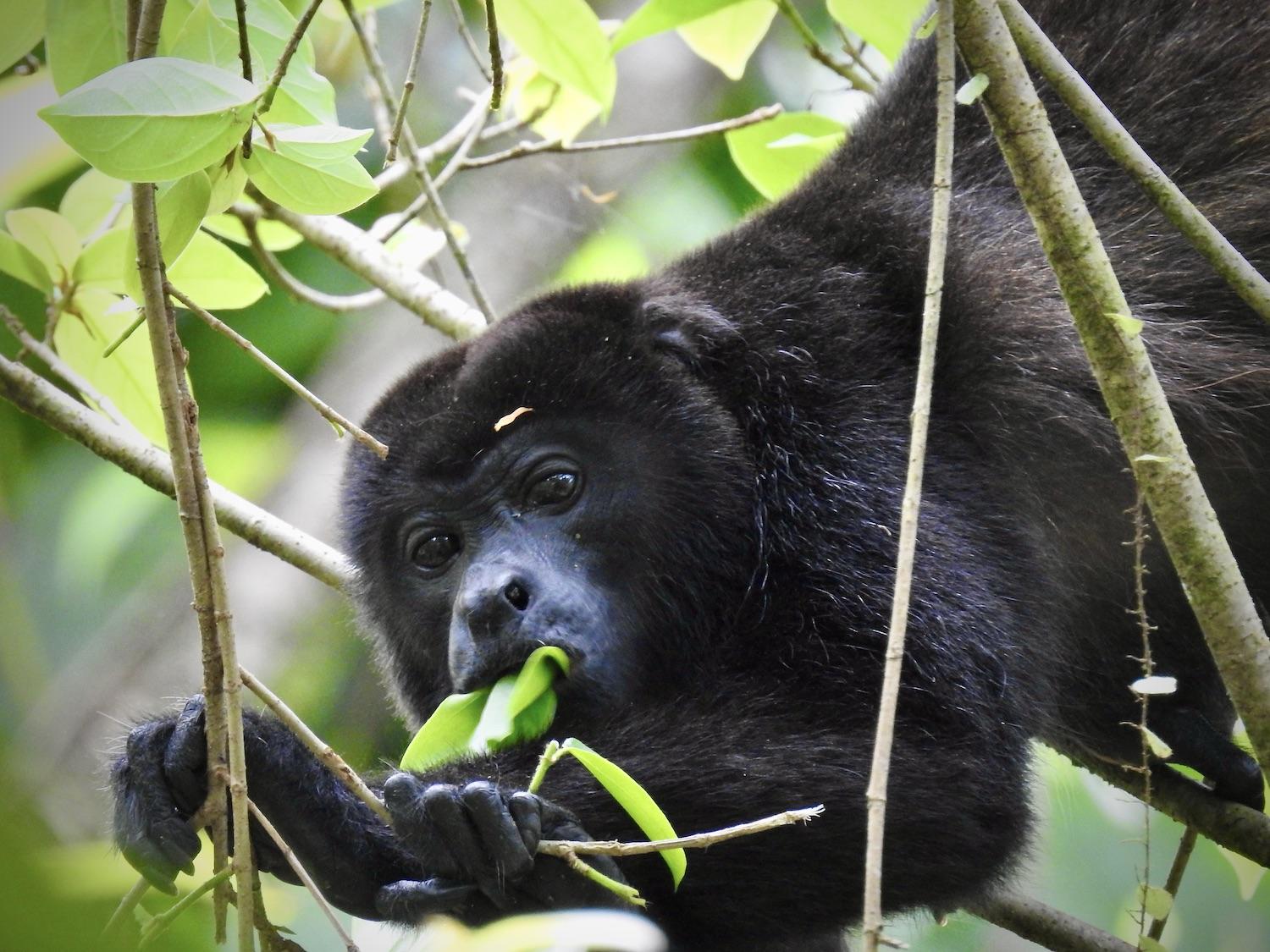
Mantled howler monkeys make an incredible racket in the rainforest/Jennifer Bain
The mantled howler monkeys were in fine form that morning — the males using specialized vocal chambers to amplify their voices and make a memorable racket. Unlike sloths, nimble spider monkeys dangled in the trees, swung between branches and only sat still for seconds at a time, making them a challenge to photograph.
We learned that gorgeous basilisk lizards can run on water and so are dubbed Jesus Christ lizards. Green iguanas are known as “tree chickens” because they live on trees and taste like chicken. Caimans are easier to spot in the calm, narrow canals than the crocodiles that prefer the wider river.
We were lucky enough to see a nest of Long-Billed Hermits, in the hummingbird family, but not blessed to see rare and endangered manatees or elusive jaguars. The last two things we saw on that Caño Harold outing were a juvenile Little Blue Heron proudly gulping a shrimp (or was it a crab?), and a Bare-throated Tiger Heron grooming its striking plumage.
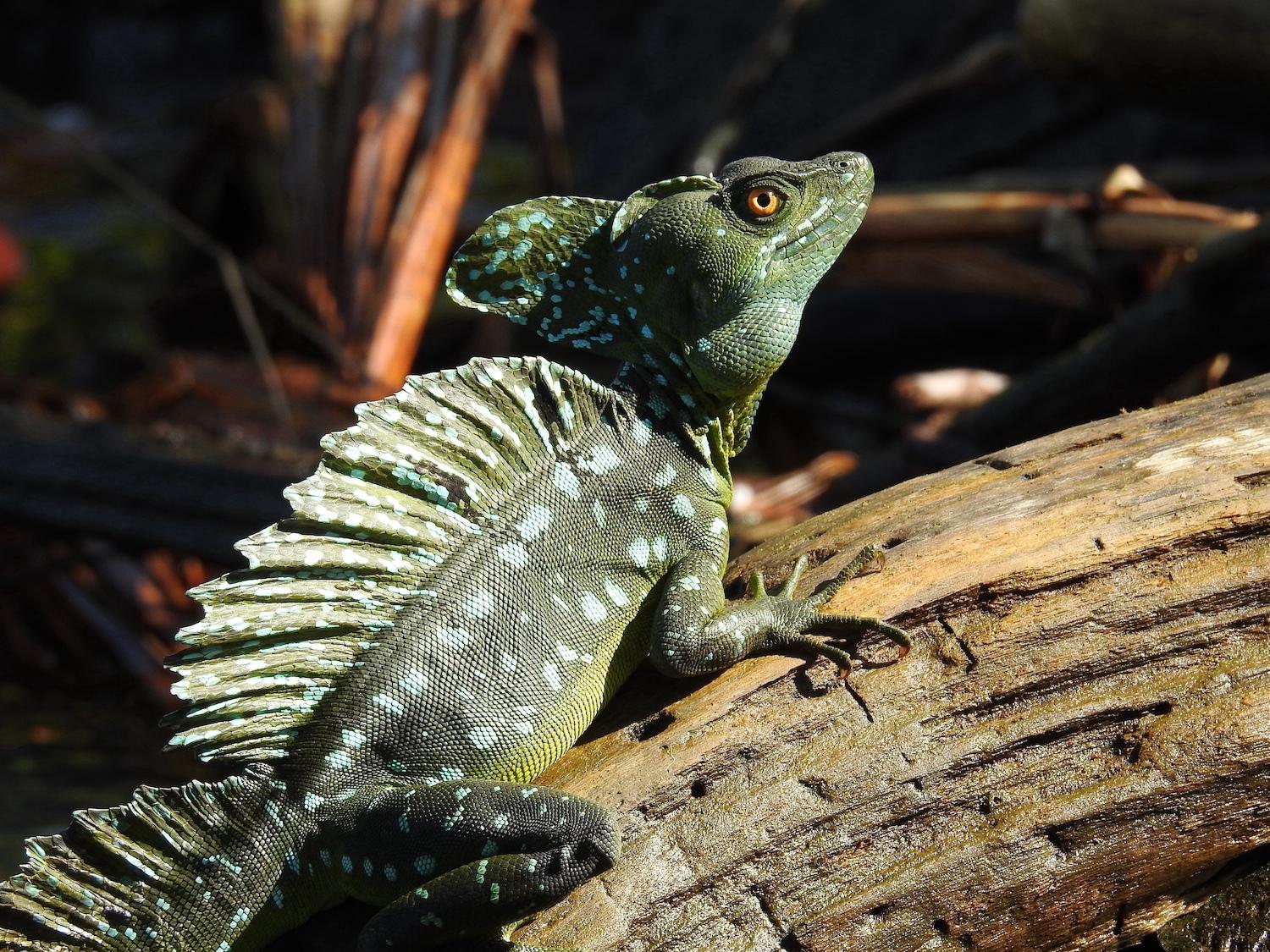
A green basilisk bathes in the sun near Pachira Lodge/Jennifer Bain
Tortuguero National Park was created on Sept. 24, 1970 in northeast Costa Rica and its boundaries were extended three times to 76,937 hectares (190,115 acres). It’s about two-thirds marine area and one-third land. Only a small fraction of the park is open to visitors. Park rangers collect fees but don't otherwise provide tours or interpretation. A small, open-air interpretation area featured signs that were only in Spanish.
Still, the park is one of the country’s biggest tourism draws because it protects what it believes is the most important green turtle nesting beach in the Western Hemisphere. Leatherback, hawksbill and loggerhead turtles also come to the nesting beach.
“Es illegal excavar nidos o tocar las tortugas,” warned a SINAC sign on the beach in the village of Tortuguero. “It’s illegal to dig nests or touch turtles.”
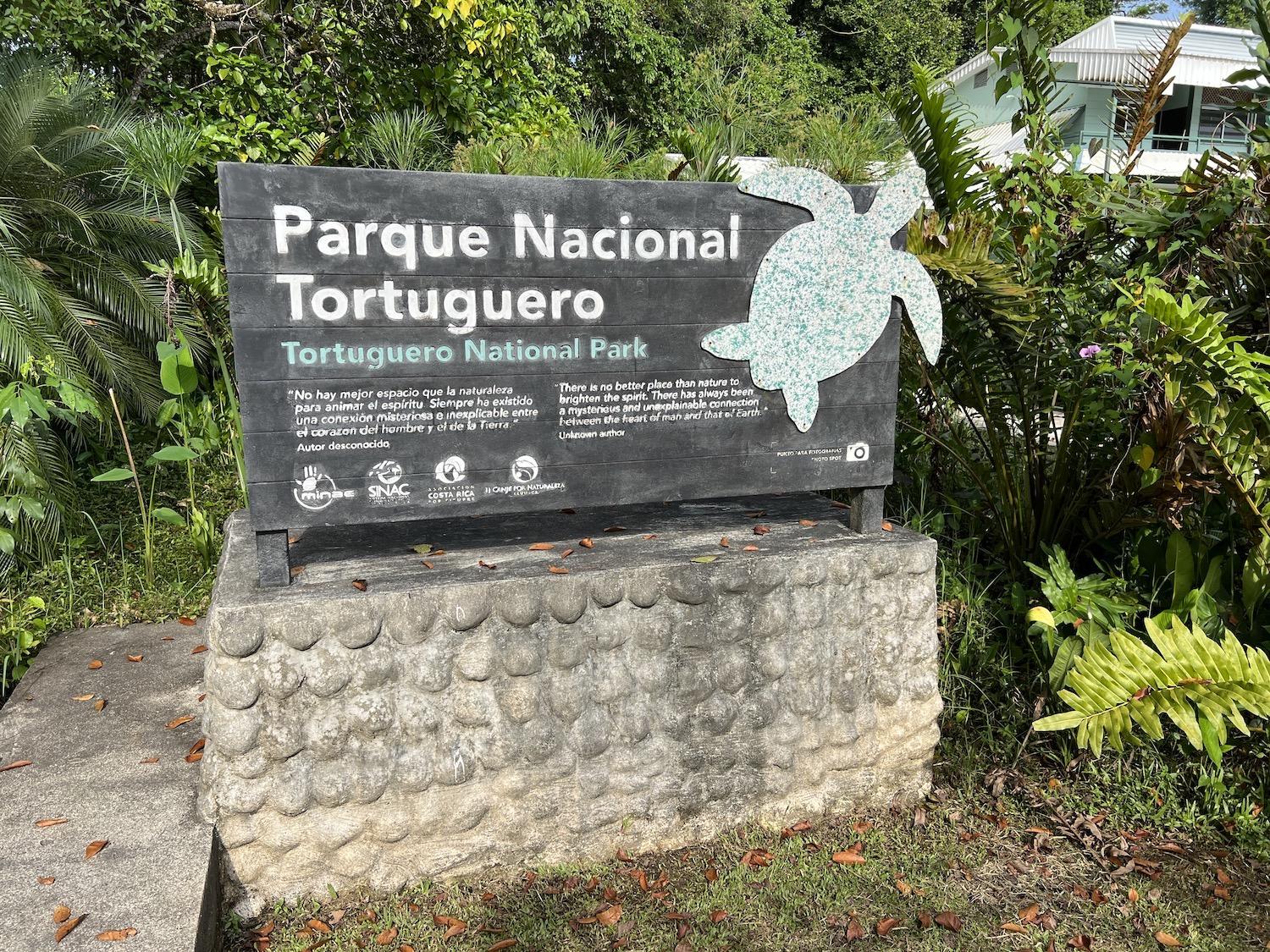
Tortugero National Park draws global visitors during sea turtle nesting season/Jennifer Bain
I learned that everyone from pre-Columbian natives, to early explorers and pirates, to the first settlers once ate turtle meat and eggs.
Turtle Bogue or Boca Tortuga — as Tortuguero was previously known — was settled in the early 20th century by Afro-Caribbean families from Limón and Parismina, along with migrants from Barra del Colorado and Nicaragua. They came to work in forests that were full of high-quality timber, such as almond and cativo, that could be processed in a local sawmill and transported through the canals.
But something happened In the 1950s that changed local history.
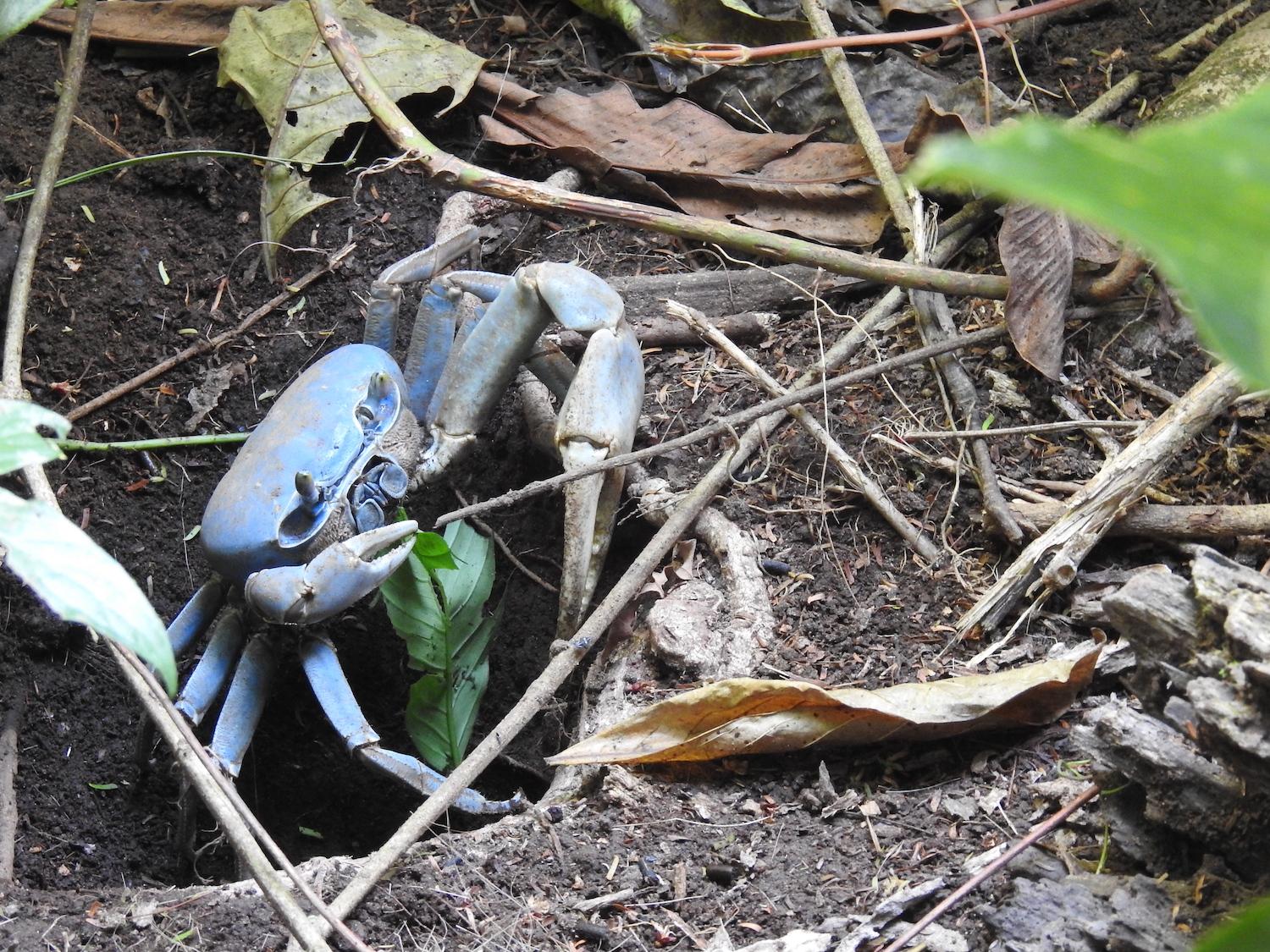
The sea turtles hadn't arrived for my visit, but the land crabs are always around/Jennifer Bain
Dr. Archie Carr, a zoologist at the University of Florida, arrived to study sea turtles. He immediately realized how important the turtles and the ecosystem here were, founded the Caribbean Conservation Corp. (now the Sea Turtle Conservancy) and worked tirelessly to convince people to protect turtles instead of eating them. He predicted that conservation-minded visitors would one day come from around the world to see this massive gathering of nesting turtles and this wild place they temporarily call home for a short time each year.
“A reverence for original landscape is one of the humanities. It was the first humanity,” Carr famously said in a quote posted at the Sea Turtle Conservancy building. “Reckoned in terms of human nerves and juices, there is no difference in the value of a work or art and a work of nature. There is this difference, though, in the kind of things they are. Any art might somehow, some day, be replaced — the full symphony of the landscape never.”
In 1970, the government stepped up to create the national park and, sure enough, travelers started coming to see the turtles.
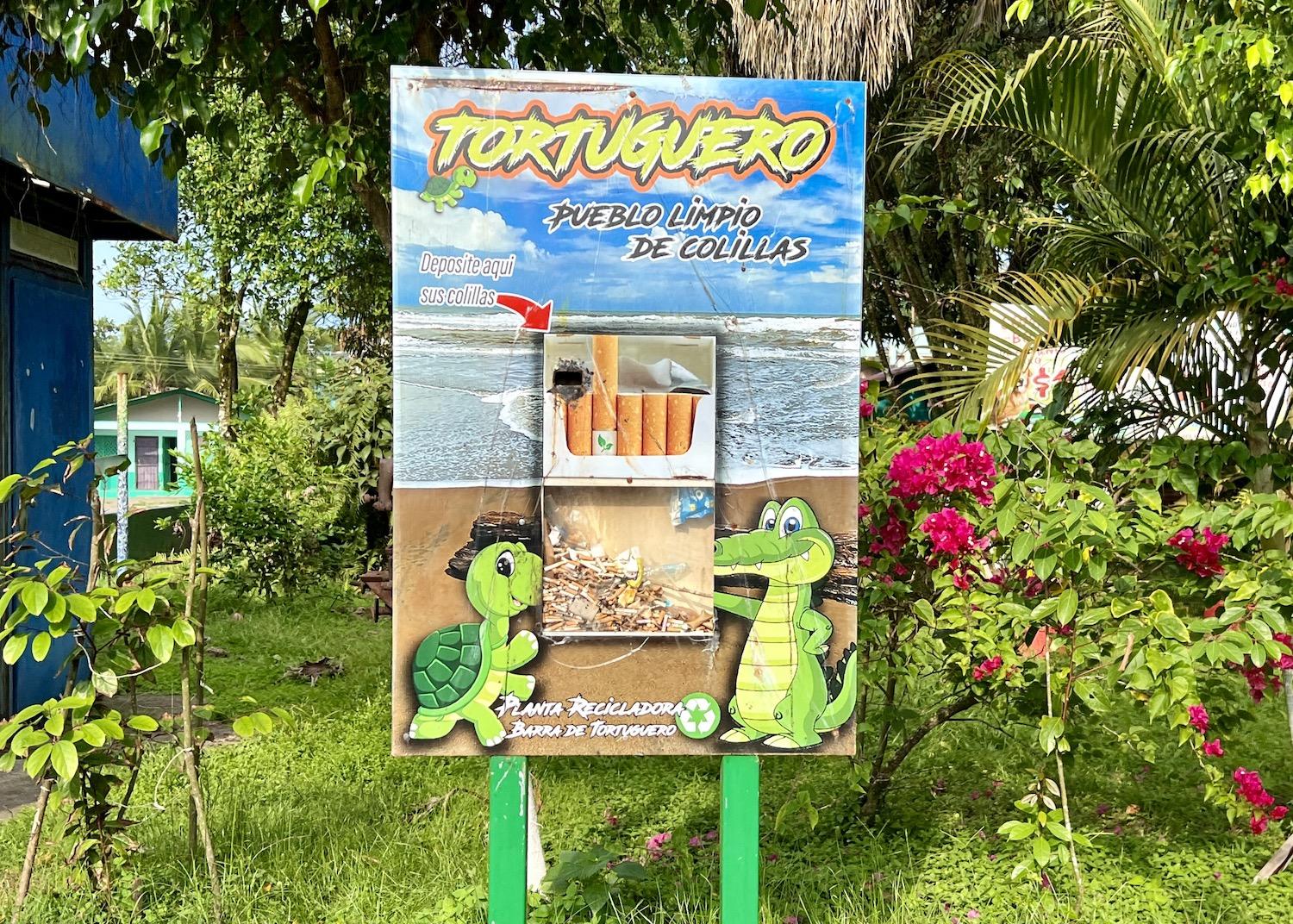
In the village of Tortuguero, smokers are asked to deposit cigarette butts in these clever containers/Jennifer Bain
I paid a few dollars to visit the modest Sea Turtle Conservancy Tortuguero Visitor Center, watch a short movie and learn how visitors are carefully managed in nesting season from June to October. Access to the 26-kilometre (15-mile) beach is restricted from 6 p.m. to 6 a.m. and a system of timed tickets and guided visits is in place.
But since it wasn't turtle season, I really just wandered the beach and the car-free village and took in the relaxed pace of life. I drank from a coconut and devoured a homemade tortilla slathered with sour cream and wrapped around a sliver of fresh cheese before returning to the lodge by boat.
Pachira Lodge is just across the river from the village. Named for the poponjoche trees (pachira aquatica) that abound here, its mission is to support sustainable development.
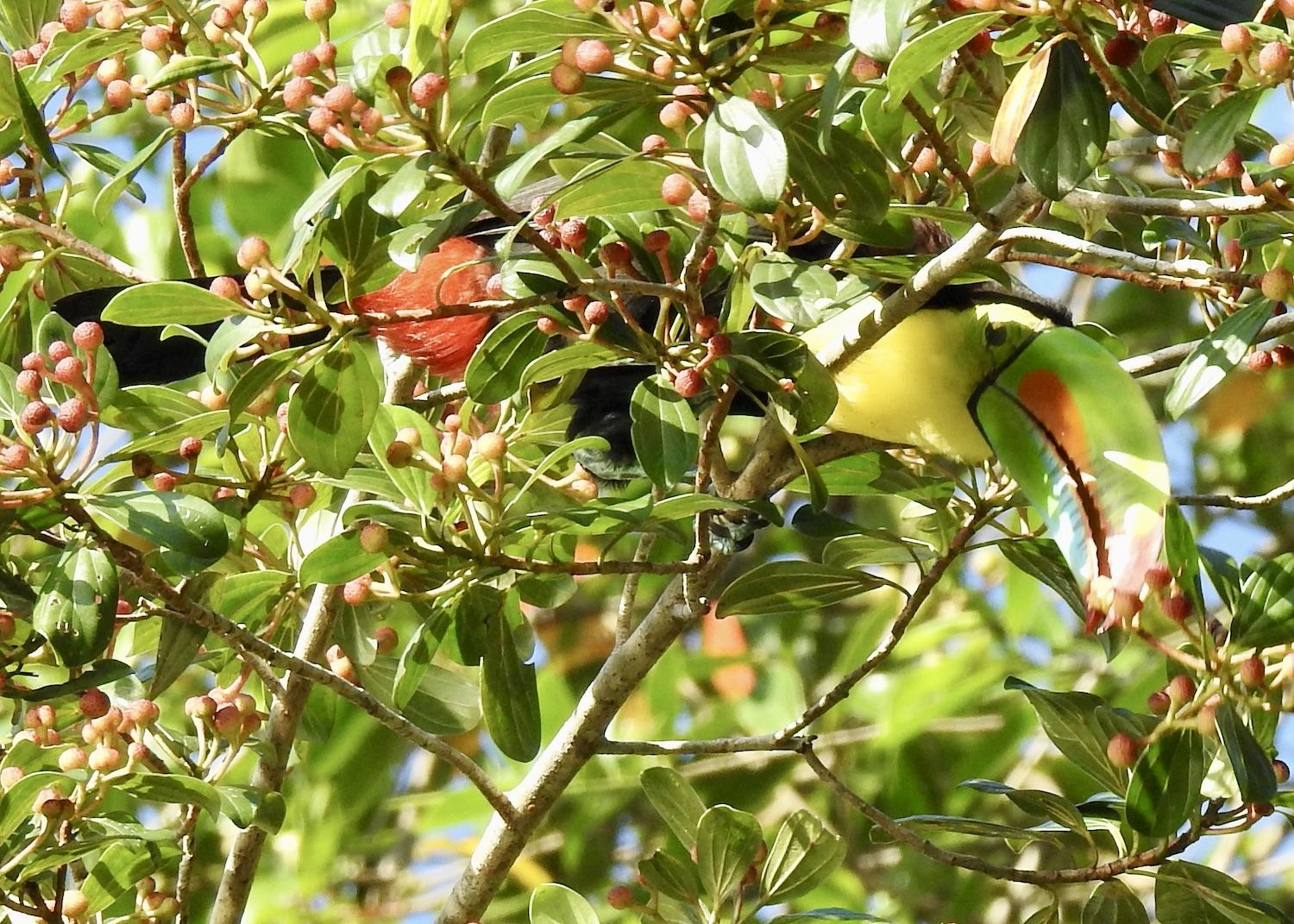
A Keel-billed Toucan shows off its rainbow beak/Jennifer Bain
At dawn one day, Leal took us down El Poponjoche Trail, regaling us with stories about army ants, sloths and termite nests, stopping to listen to howler monkeys, and pointing out Montezuma Oropendolas, large and noisy black birds with bold yellow tail streaks.
“Keep your eyes wide open and whatever catches your eye, you can tell me,” the avid birder said.
As we strolled a boardwalk through the forest, we admired elaborate webs made by golden silk orb weavers, large spiders with distinctive black and yellow markings. One exciting find was a Chestnut Woodpecker.
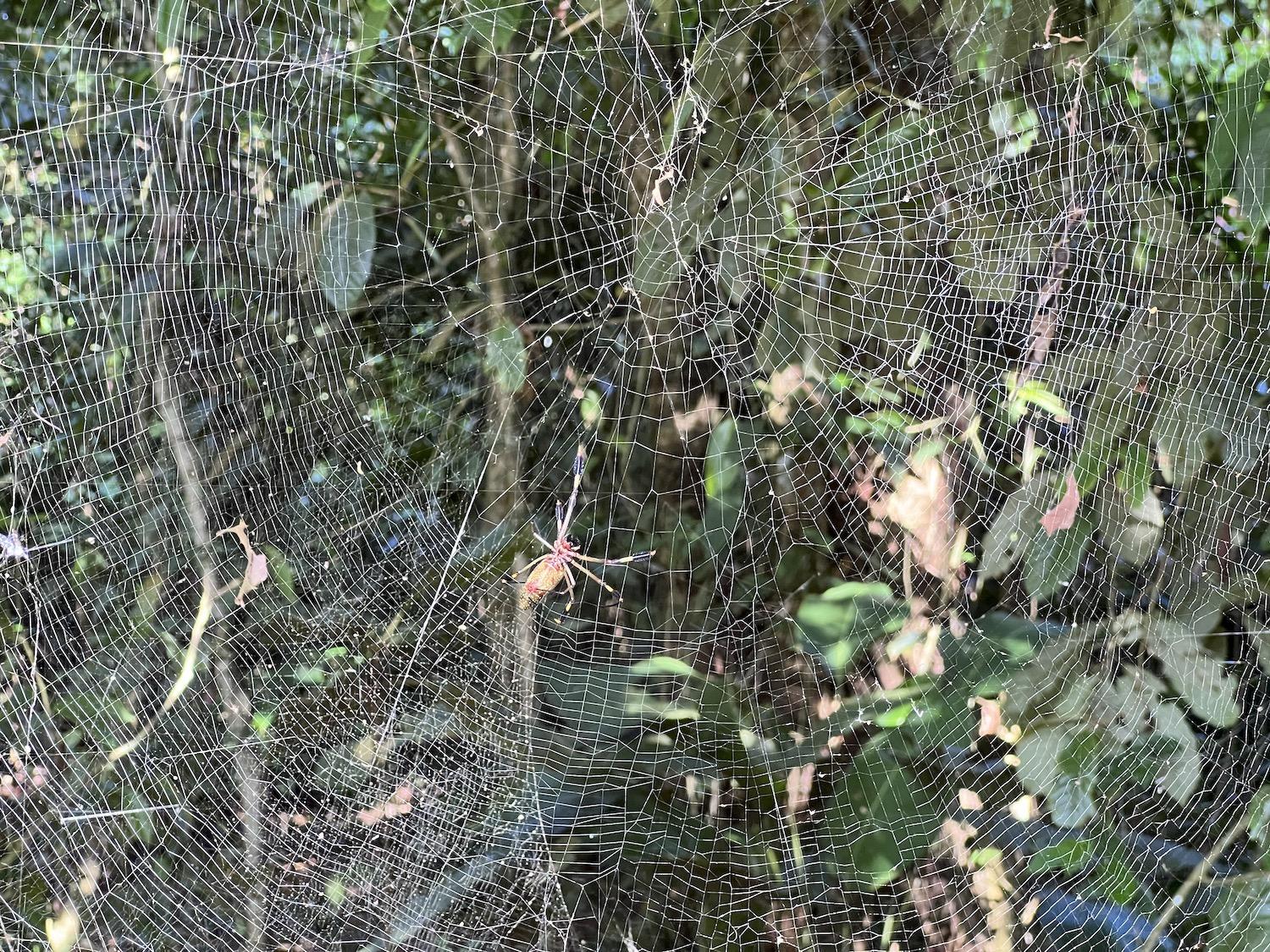
They're hard to photograph but the webs of golden silk orb-weavers are elaborate/Jennifer Bain
Assistant manager Bismarck Mendoza told me how lodge owner Annabelle Incera started off cleaning houses in the United States before building this lodge and two sister properties. Buffet meals are included with everyone's stay — and served promptly at 7 a.m., 1 p.m. and 7 p.m. — and in between eating you can take boat tours, go on nature walks, visit the village and see the sea turtles if you've come in the right season.
It was Mendoza who told me I’d just missed a guided hike to Tortuguera Hill, which is apparently a hotspot for strawberry poison-dart frogs (Oophaga pumilio) and has sweeping views of the river, canals and park. Leal called a friend and quickly arranged a water taxi to whisk me there in between our morning canal tour and an afternoon river boat tour.
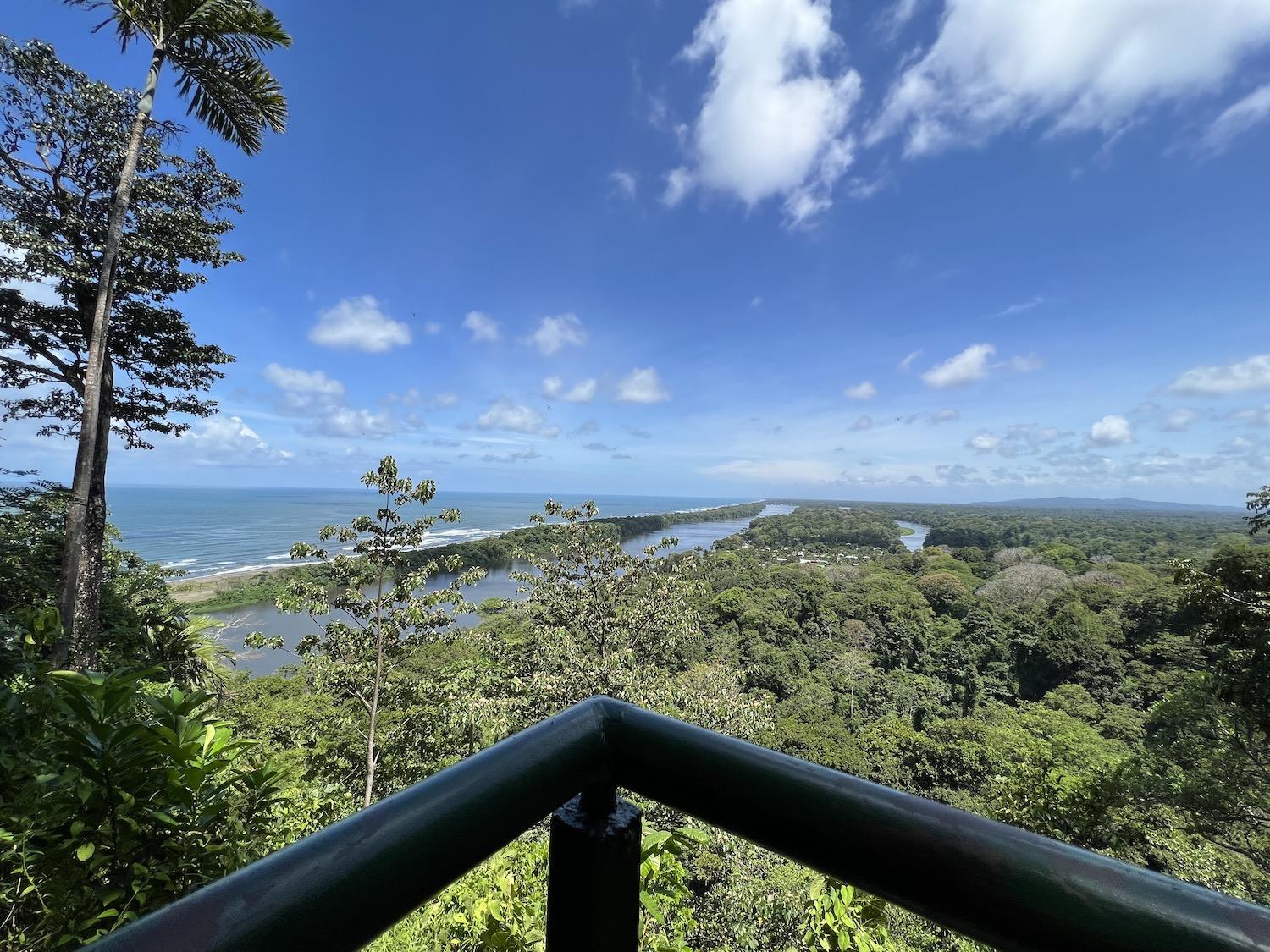
A view of the Caribbean Sea, Río Tortuguero, Tortuguero National Park and canals from Tortuguero Hill's observation platform/Jennifer Bain
Tortuguero Hill wasn’t the biggest hill I’ve ever climbed (it's just 119 metres/390 feet above sea level), but it’s the highest one in the Costa Rican Caribbean, and although I was alone, nine interpretation signs in Spanish and English told me what was going on.
The hill is actually an ancient volcano cone and the rainforest protects countless animals and birds. A cave is home to bats. Signs warned that poison dart frogs were around, and not to touch them or step on them. But the only one I saw was the statue by the entrance, its red and blue body faded by the sun. There was a similar statue in Tortuguero.
It was only when I finally found a ranger as I was leaving and belatedly presented my $2 entrance ticket that I realized I wasn’t in the national park, but in Refugio Nacional de Vida Silvestre Barra Del Colorado (Sector Cerro Tortugero). The wildlife refuge was created in 1985 near the community of San Francisco. Like at the national park, the number of daily visitors are restricted and managed through an admission ticket system.
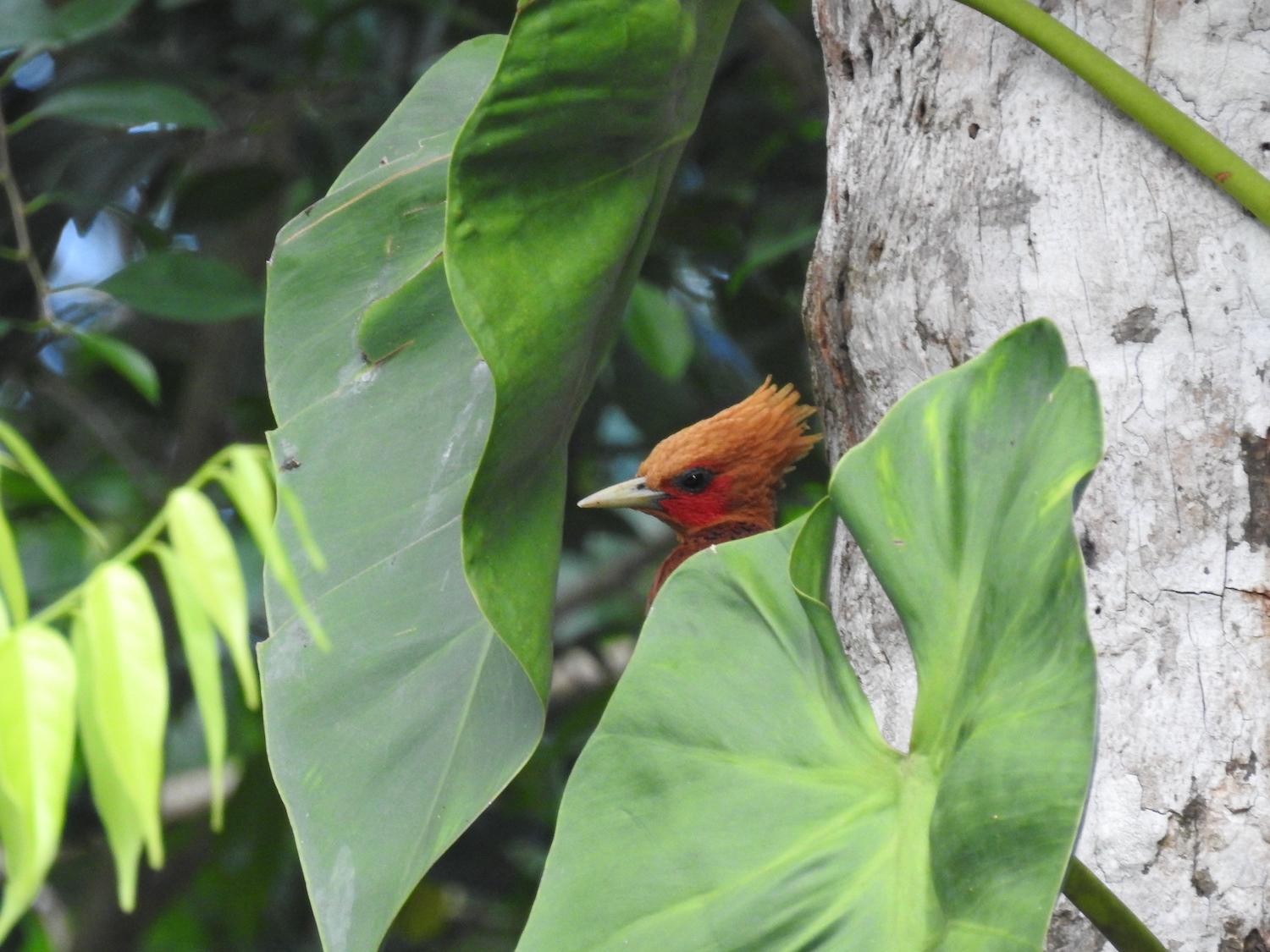
A Chestnut Woodpecker is hidden in the rainforest/Jennifer Bain
I thought about Leal and how she kept telling us that animals and birds don't care about boundaries and move freely between national parks and other protected and unprotected areas.
And I was struck by the guidance on one of signs along the Tortuguero Hill boardwalk: “Listen to the sound of the rainforest where life is exuberant, thousands of species of insects, amphibians, reptiles and mammals co-exist with an uncountable number of plants and leafy trees, creating all kind of relationships.”
I slowed down, listened intently and heard much more than I saw or could identify.
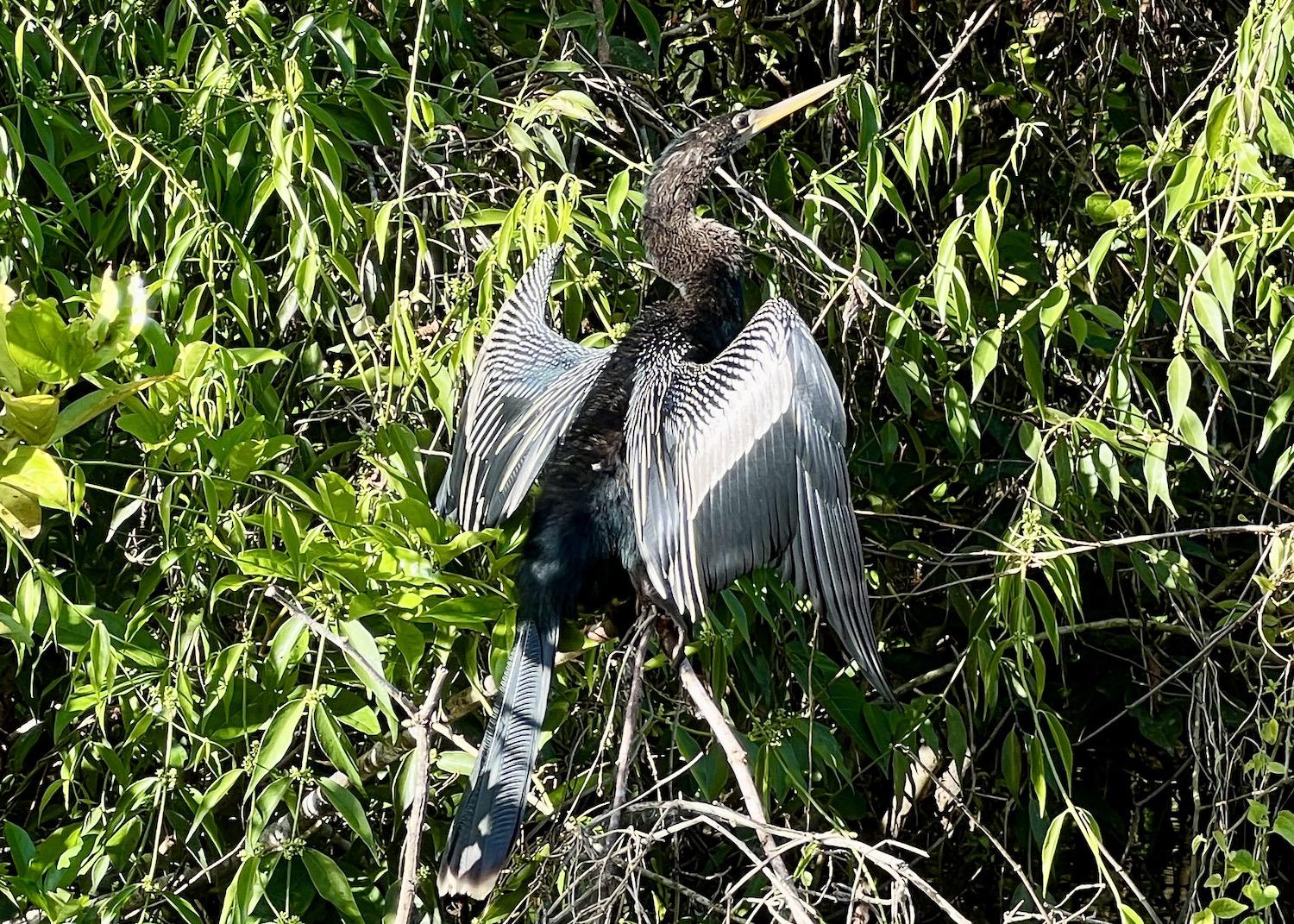
The canals of Tortuguero National Park are full of anhingas drying their feathers/Jennifer Bain
My water taxi actually dropped me halfway down the trail, near the spot where you climb the hill to an observation deck. When I got back to the midway point and paused, wondering whether to follow the boardwalk in the other direction, I spotted a local guide with two guests and asked him whether there was anything special down that way.
“Everything here is special,” he replied nonchalantly — and it was the perfect answer.
I had only spent three days in Costa Rica — one in the capital city and two in and around Tortuguero National Park — and had seen so much that the trip already felt complete. But there were five more days to go. My group boarded wooden boats once again for a river journey full of caimans, crocodiles, iguanas and lizards to a place called La Pavona and then moved on to other parts of the country to see volcanoes, cloud forests and, of course, more sloths.
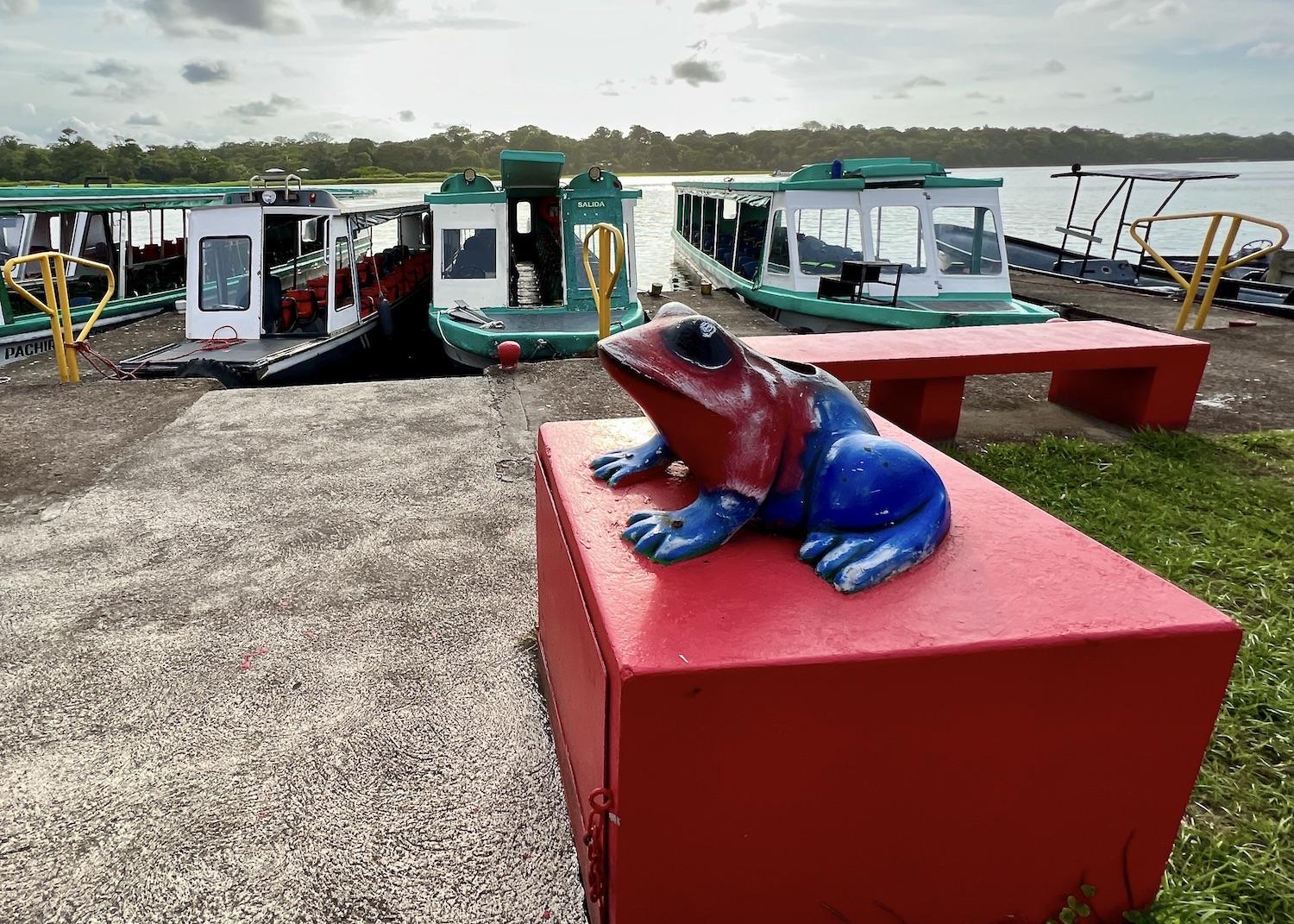
A poison dart frog statue in the village of Tortuguero, where river boats stand ready for visitors/Jennifer Bain


